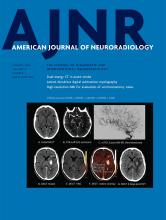Abstract
BACKGROUND AND PURPOSE: Evidence from randomized controlled trials for the efficacy of vertebral augmentation in vertebral compression fractures has been mixed. However, claims-based analyses from national registries or insurance datasets have demonstrated a significant mortality benefit for patients with vertebral compression fractures who receive vertebral augmentation. The purpose of this study was to calculate the number needed to treat to save 1 life at 1 year and up to 5 years after vertebral augmentation.
MATERIALS AND METHODS: A 10-year sample of the 100% US Medicare data base was used to identify patients with vertebral compression fractures treated with nonsurgical management, balloon kyphoplasty, and vertebroplasty. The number needed to treat was calculated between augmentation and nonsurgical management groups from years 1–5 following a vertebral compression fracture diagnosis, using survival probabilities for each management approach.
RESULTS: The adjusted number needed to treat to save 1 life for nonsurgical management versus kyphoplasty ranged from 14.8 at year 1 to 11.9 at year 5. The adjusted number needed to treat for nonsurgical management versus vertebroplasty ranged from 22.8 at year 1 to 23.8 at year 5.
CONCLUSIONS: Both augmentation modalities conferred a prominent mortality benefit over nonsurgical management in this analysis of the US Medicare registry, with a low number needed to treat. The calculations based on this data base resulted in a low number needed to treat to save 1 life at 1 year and at 5 years.
ABBREVIATIONS:
- BKP
- balloon kyphoplasty
- NNT
- number needed to treat
- NSM
- nonsurgical management
- VCF
- vertebral compression fracture
- VP
- vertebroplasty
- © 2020 by American Journal of Neuroradiology












